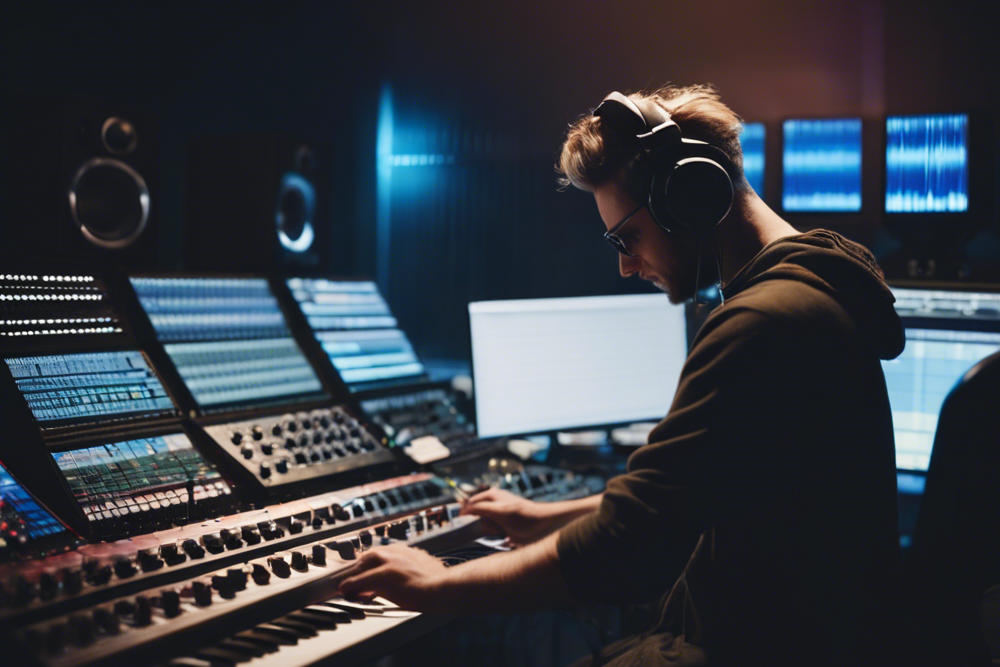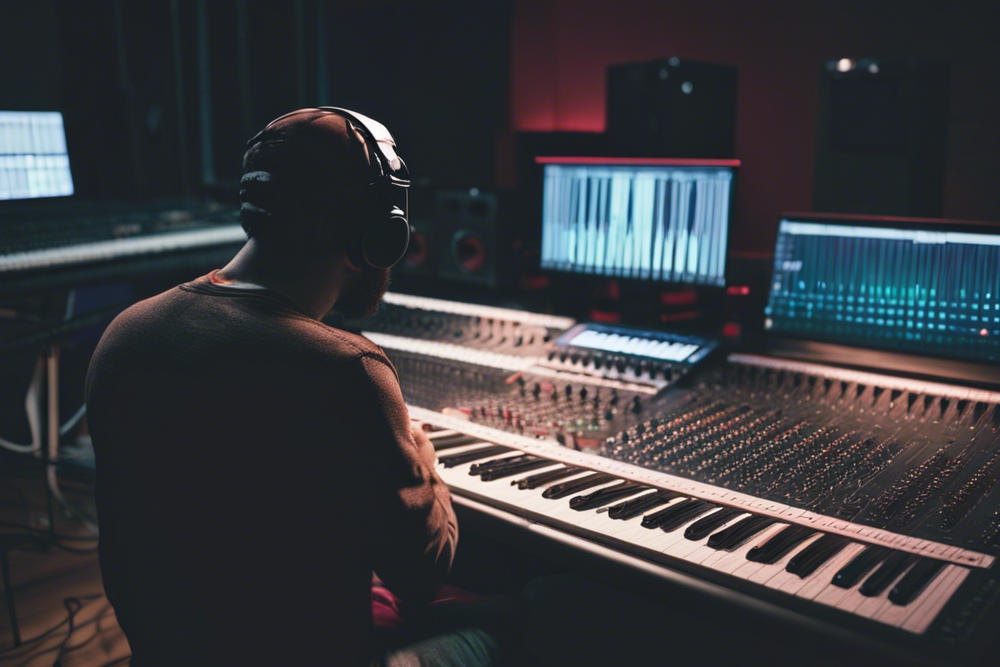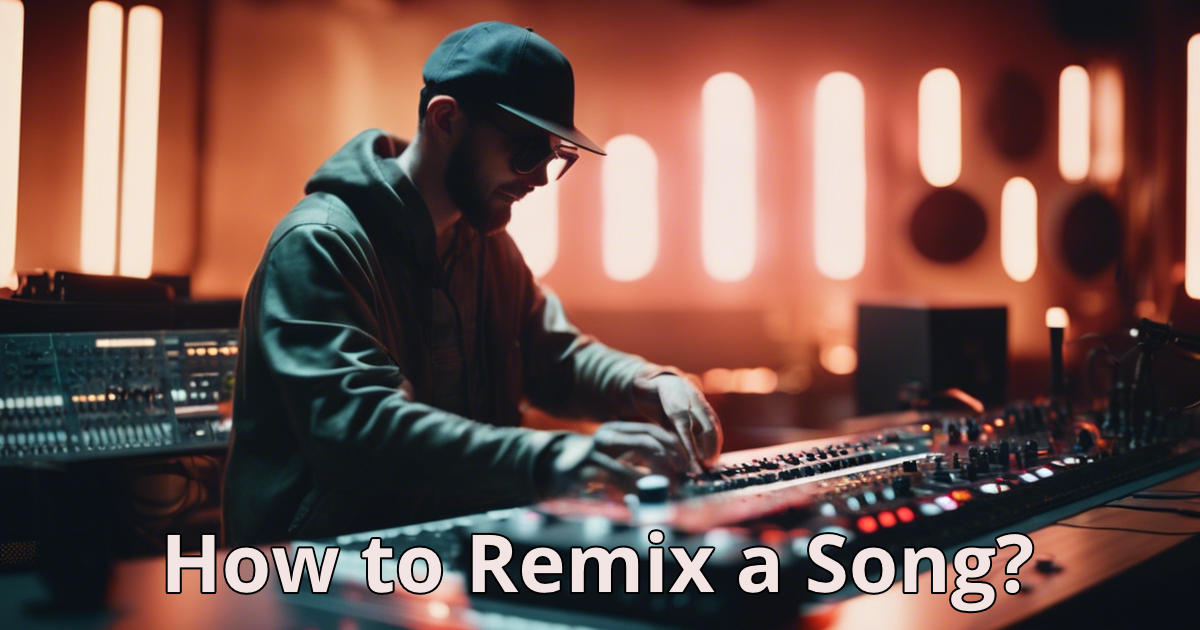Estimated reading time: 8 minutes
Remixing a song is a creative and exciting way to put your own spin on a favorite track. It allows you to add your unique touch to the music, transforming it into something new and fresh. But where do you start? In this guide, I will take you through the step-by-step process of remixing a song, from understanding the concept of remix to creating your own remix masterpiece.
Table of contents
- Understanding the concept of remix
- Choosing the right song to remix
- Gathering essential elements for remixing: original tracks, chord progressions
- Understanding the role of original artist and original stems in remixing
- Decoding the signature sounds in a popular song
- Participating in remix contests: A pathway to success
- Working with audio files: instrumental tracks, vocal stems, and more
- Creating your own remix: From bootleg remix to official remix
- Exploring the significance of musical elements: rhythmic and melodic elements
- Remixing popular music: A different perspective
- Collaborating with independent artists for remix projects
- A glimpse into the production process of a remix
- Getting started with a digital audio workstation for song remixing
- Conclusion: The joy of creating your own remix
- FAQs
Understanding the concept of remix
A remix is a reimagining of an original song. It involves taking the existing elements of the song, such as the vocals, instrumental tracks, and other audio files, and rearranging them to create a new version. Remixing provides an opportunity to experiment with different styles, genres, and sounds, giving the song a fresh perspective.
Choosing the right song to remix
The first step in remixing a song is choosing the right track. It could be a popular song that you love or an independent artist’s music that you want to collaborate with. The key is to select a song that has elements you can work with and add your own creative flair. Consider the genre, tempo, and mood of the song, as well as your personal connection to it.

Gathering essential elements for remixing: original tracks, chord progressions
Once you have chosen the song, it’s time to gather the essential elements for remixing. This includes obtaining the original tracks, which may be available as stems or individual instrument tracks. These tracks will serve as the foundation for your remix. Additionally, understanding the chord progressions of the original song will help you create harmonies and melodies that complement the existing music.
| Element | Description |
|---|---|
| Original Tracks (Stems) | These are individual audio tracks extracted from the original song, such as vocals, instruments, etc. |
| Chord Progressions | Understanding the chord sequences and harmonic structure of the original song for remixing purposes. |
Understanding the role of original artist and original stems in remixing
When remixing a song, it’s important to respect the original artist and their work. The original stems provided by the artist or record label are valuable resources that allow you to work with the individual elements of the song. However, it’s essential to adhere to any copyright restrictions and obtain proper permissions before releasing your remix.
Decoding the signature sounds in a popular song
One of the keys to creating a successful remix is decoding the signature sounds in the original song. These signature sounds could be a catchy melody, a unique rhythm, or a distinctive instrument. By identifying and incorporating these elements into your remix, you can maintain the essence of the original while adding your own creative touch.

Participating in remix contests: A pathway to success
Remix contests provide a great opportunity for aspiring remixers to showcase their skills and gain recognition. Many artists and record labels host remix competitions, inviting remixers to submit their versions of a song. Participating in these contests can give you exposure and potentially open doors to collaborations and professional opportunities.
Working with audio files: instrumental tracks, vocal stems, and more
When working with audio files for remixing, you will encounter various elements, such as instrumental tracks and vocal stems. These individual tracks allow you to manipulate and rearrange the different parts of the song. Experiment with different effects, filters, and arrangements to create a unique remix that stands out.
| Audio File Type | Description |
|---|---|
| Instrumental Tracks | These are isolated recordings of the instrumental parts (e.g., drums, bass, synths) from the song. |
| Vocal Stems | Individual recordings of the vocal parts (e.g., lead vocals, harmonies) separated from the song. |
| Other Elements | Additional audio files like sound effects, samples, or specific musical elements used in the song. |
Creating your own remix: From bootleg remix to official remix
There are different types of remixes you can create, ranging from bootleg remixes to official remixes. Bootleg remixes are unofficial versions that remixers create for personal enjoyment or to share with others. On the other hand, official remixes are commissioned by artists or record labels for release. Understanding the difference between the two can guide you in the remixing process.
| Type of Remix | Description |
|---|---|
| Bootleg Remix | An unofficial remix created without authorization or licensing, often for personal enjoyment or sharing but not for commercial use. |
| Official Remix | A commissioned remix authorized by the original artist or record label for an official release, often with contractual agreements. |
Exploring the significance of musical elements: rhythmic and melodic elements
When remixing a song, it’s crucial to explore the significance of rhythmic and melodic elements. Rhythm sets the foundation for the song, while melodies add emotion and catchiness. Experiment with different rhythms and melodies to create a remix that has its own unique vibe while still paying homage to the original song.
| Musical Element | Description |
|---|---|
| Rhythmic Elements | Foundation of the song’s groove and tempo, including drum patterns, percussion, and rhythmic accents. |
| Melodic Elements | Key components that convey emotion and melody, such as lead melodies, chord progressions, and harmonic structures. |
Remixing popular music: A different perspective
Remixing popular music offers a different perspective on well-known songs. It allows you to reinterpret the song and present it in a way that surprises and delights the listeners. By adding your own creative touches, you can transform a popular song into something fresh and exciting.
Collaborating with independent artists for remix projects
Collaborating with independent artists for remix projects can be a rewarding experience. It allows you to work closely with the artist, understand their vision, and bring your own creative ideas to the table. Through collaboration, you can create remixes that showcase both your talents and the original artist’s work.
A glimpse into the production process of a remix
The production process of a remix involves various steps, from importing the original tracks into a digital audio workstation (DAW) to arranging and mixing the new elements. Experiment with different effects, filters, and techniques to shape the sound of your remix. The production process requires creativity and attention to detail, but it’s also a fun and fulfilling journey.
| Production Process Step | Description |
|---|---|
| Importing Original Tracks | Transfer the original audio stems (e.g., vocals, instruments) into a digital audio workstation (DAW) for remixing. |
| Arranging and Layering | Organize and layer different elements (e.g., beats, melodies) to create new arrangements and structures for the remix. |
| Editing and Manipulation | Use editing tools to adjust timing, pitch, and effects on individual tracks to fit the remix’s vision and style. |
| Adding New Elements | Introduce new sounds, samples, or effects to enhance the remix and add creative flair to the original song. |
| Mixing and Balancing | Balance the levels, EQ, and spatial effects (e.g., reverb, delay) to achieve a cohesive and polished sound in the remix. |
| Mastering and Finalizing | Apply mastering techniques to ensure the remix is sonically optimized for distribution and playback across different platforms. |
Getting started with a digital audio workstation for song remixing
To create a remix, you’ll need a digital audio workstation (DAW). A DAW is software that allows you to record, edit, and arrange audio files. There are many DAW options available, such as Ableton Live, FL Studio, and Logic Pro. Choose a DAW that suits your needs and learn its features to effectively remix songs.
| Step | Description |
|---|---|
| Choose a DAW | Select a digital audio workstation software that suits your preferences and budget (e.g., Ableton Live, FL Studio, Logic Pro). |
| Install the DAW | Download and install the chosen DAW software on your computer. |
| Learn Basic Navigation | Familiarize yourself with the DAW interface, including tools for importing, editing, arranging, and mixing audio tracks. |
| Import Original Tracks | Import the original audio stems (e.g., vocals, instrumentals) into the DAW for remixing. |
| Explore Effects and Tools | Experiment with audio effects, plugins, and editing tools to manipulate and enhance the tracks in your remix. |
| Arrange and Mix Tracks | Arrange the imported tracks, apply effects, adjust levels, and mix the elements to create your remix composition. |
| Practice and Experiment | Practice remixing with different techniques, effects, and styles to develop your skills and creative remixing approach. |
Conclusion: The joy of creating your own remix
Remixing a song is a fulfilling and creative endeavor that allows you to express your musicality and put your own unique spin on existing music. By following this simple guide, you can embark on your remixing journey and create remixes that captivate and inspire. So, grab your favorite songs, gather the essential elements, and let your creativity soar as you remix your way to musical greatness!
Related Posts
- How to Start Making Music? A Beginner’s Guide
- How to Make a Music Album: A Comprehensive Guide for Musicians and Producers
- How to Make a Soundfont – A Step-by-Step Guide on Creating Your Own Soundfont
- The Beginner’s Guide on How to EQ Vocals for Stellar Sound
- Mastering in Ableton: Elevate Your Music to Professional Quality
- How Much Does it Cost to Make a Music Video?
FAQs
While you can remix any song you want for personal enjoyment, it’s important to respect copyright laws and obtain proper permissions if you plan to release your remix publicly.
No, you don’t need to be a professional producer to remix songs. Remixing is a creative process that anyone can learn and enjoy. With practice and experimentation, you can develop your remixing skills.
To remix songs, you’ll need a digital audio workstation (DAW) software. Some popular options include Ableton Live, FL Studio, and Logic Pro. Choose a DAW that suits your needs and explore its features.
To make your remix stand out, focus on adding your unique creative touch. Experiment with different sounds, effects, and arrangements. Incorporate your own musical ideas and signature elements to create a remix that is distinctly yours.
Yes, remixing songs can lead to professional opportunities. Participating in remix contests, collaborating with independent artists, and showcasing your remixes online can help you gain recognition and potentially open doors to collaborations and career advancements.
